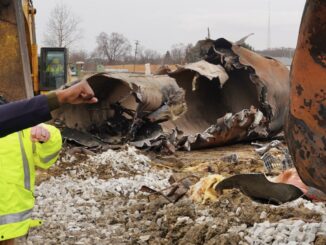AKRON, Ohio – The Wheeling & Lake Erie (W&LE) Railway will get a much-needed facelift thanks to a new loan from the U.S. Department of Transportation meant to boost the competitiveness of the railroad that serves as a key economic link in Ohio, Pennsylvania and West Virginia.
U.S. Assistant Secretary for Transportation Policy Emil Frankel was on hand at the railroad’s Brittain Yard in Akron in late July to announce a $25 million loan to the W&LE for rehabilitation of 315 miles of track and replacement of over 168,000 rail ties.
“Along the aging Wheeling and Lake Erie system, jointed rail will be replaced by continuous welded rail on key portions of track, leading to fewer derailments and faster shipping times,” Frankel said. “More efficient trains equal shorter waits at rail crossings for drivers, and fewer trucks on the roads in local communities. Track upgrades will also mean less noise in communities, as welded rail smoothes the traditional ‘clickety clack’ that comes from jointed rail.”
The loan is provided through the Department’s Railroad Rehabilitation and Improvement Financing (RRIF) program. The infrastructure improvements will enhance the ability of the W&LE to move freight using 286,000 pound rail cars, now the industry standard, and continue providing its approximately 170 customers competitive shipping rates and a cost-effective alternative to commercial truck service.
The W&LE is a regional railroad that provides common carrier rail service over approximately 900 miles in 23 counties located in Ohio, Pennsylvania, West Virginia, and Maryland. It connects with three Class I railroads and 14 short line railroads, and primarily carries commodities such as coal, stone, iron ore, and steel.
“The W&LE is an important transportation link, and the economic lifeblood of the communities and businesses it serves,” Frankel said. “This type of investment is the cornerstone of the Bush Administration’s commitment to the economic promise of this region and will help the railroad attract new customers and offer competitive shipping rates that will in turn foster economic development along its corridor.”




